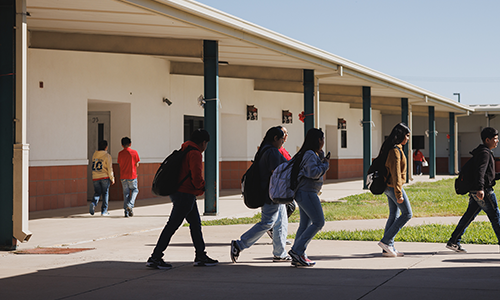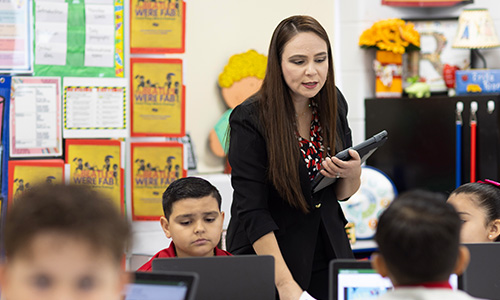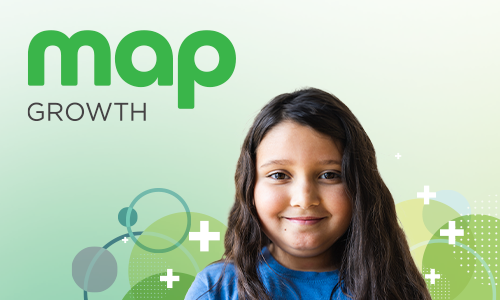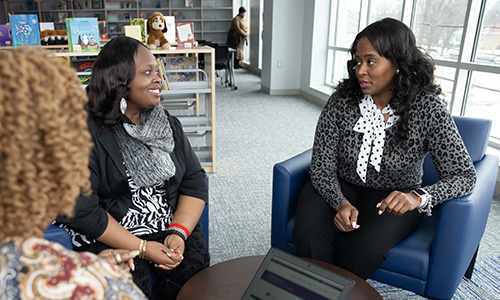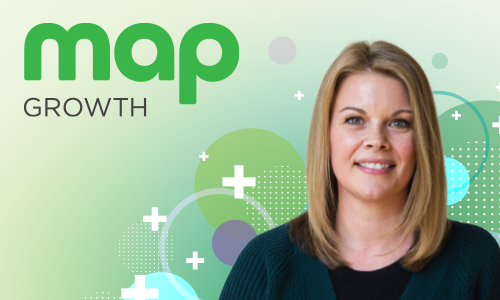MAP® Growth™ assessment results are an important piece of information to help teachers determine where students are in their learning. It can answer the all-important question, “What is the relative achievement of the students in my class and how will that impact my instructional planning?” Understanding each student’s achievement can help us consider where our students are when compared to students across the country and help educators support growth for high-achieving students.
Educators come to us with the following question: “How does the MAP Growth assessment show growth for students already at 99th percentile?” Explaining this to family members of high-achieving students can be challenging. One may assume these students can’t grow because they are already at the 99th percentile, or it might appear that there is little or no growth when they are already scoring so high. Let’s be clear: the 99th percentile doesn’t mean there’s nothing left to learn.
Important considerations
There are six things to consider whenever we educators have a conversation about growth for high-achieving studentswith a parent or guardian:
- The MAP Growth “growth projection” for high achievers is possible because their growth is based on students like them, that is, students who are also performing exceptionally well
- When students meet their growth projection, they maintain their achievement status
- Sometimes, small increments of growth (for example, a growth projection of two points) are good growth
- Students don’t have to always meet growth projections to grow over time
- High-achieving students are having learning growth and benefit from just right instruction as much as their peers do
- To contextualize next steps for learning, teachers can use the MAP Growth Class Profile and Student Profile reports to support instructional decisions and flexible grouping
How to support growth for high-achieving students
An additional question we need to ask about students in the 99th percentile is “Have students been brought into the conversation about their growth?”
When a student is finding content easy and they are getting everything right, they can get bored. If we don’t engage them with instruction that has appropriate complexity and difficulty, we may implicitly be sending them a message that they are doing well enough because they find current content and learning easy. But we want every student exposed to appropriate learning challenges. This allows them to work in their zone of proximal development, or ZPD, which is critical if we want students to love learning and grow.
In my work as a professional learning consultant, I often ask teachers to reflect on how often they provide learning experiences that are aligned with students’ high achievement. Are they designing learning aligned with the full scope of their grade-level standards in mind? We should avoid the assumption that we must add a program or immediately develop a personalized learning plan.
One way to think about this is through the lens of formative instructional practice. Once a student shows they are secure on current content, we should look carefully at the depth of knowledge opportunities within grade-level standards prior to shifting to new content. Providing these opportunities at the right time—and in the right measure—gives the high-performing student some of the challenge to learn that many of their peers experience. This is essential to their future learning because, at some point, they will be challenged by a concept or skill.
On the same page
Once all those involved in learning growth—the student, their family support system, and their teacher—understand that high-achieving students can grow both on and, potentially, beyond grade level, and once they realize that together they can identify some specific concepts and skills to work on in and outside of class, the growth conversation becomes relatively easy and actionable. We have seen in different high-achieving groups that students who are provided the opportunity to have goal-setting conversations regularly—with specific learning outcomes connected to their achievement—get growth results that maintain their achievement level over time.
Growth for high-achieving students is, indeed, possible. When students are blessed with academic gifts, we should pay close attention to the assessments we administer at each grade level and the resources we use to help them grow. Offering high-performing students the support and instruction they need to grow takes commitment from the entire learning community. Consider the following discussion questions as you begin to think more deeply about this.
Questions for teachers
- What are some things to consider before having a conversation with families about the growth of their high-achieving student?
- In what ways do you partner with your students in conversations about their growth?
- How can you involve students in growth conversations more?
- In what ways do you already provide learning experiences that are aligned with high achievement?
- What else could you do to provide more learning experiences that are aligned with high achievement?
Questions for leaders
- In what ways do you support teachers in their communication to students and families about high achievement and growth?
- How can you support teachers in their communication about growth for high-achieving students more?
- In what ways do you foster a culture where students and teachers regularly have conversations about growth?
- In what ways do your teachers already support high achievement?
- What is one specific step your school or district can take to help high-achieving kids understand growth—and achieve it?



